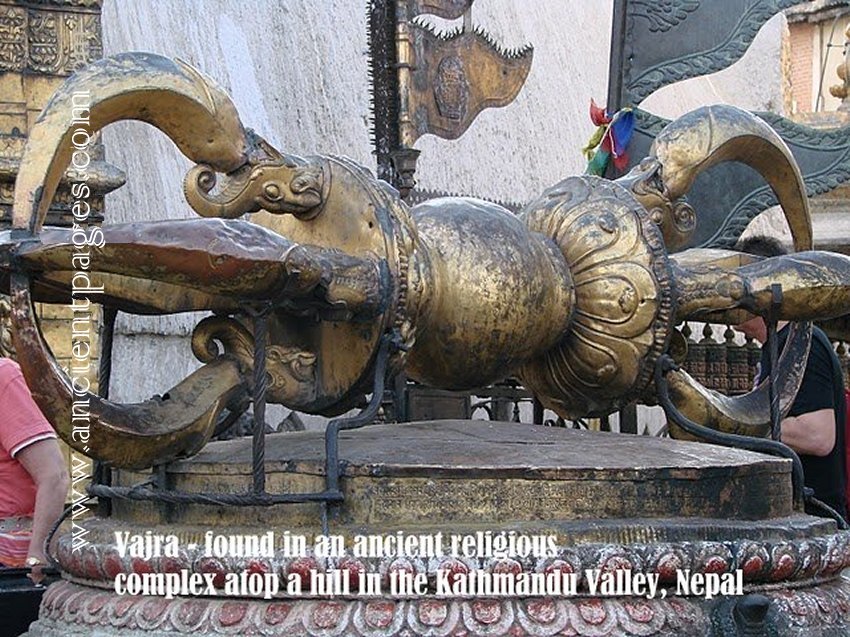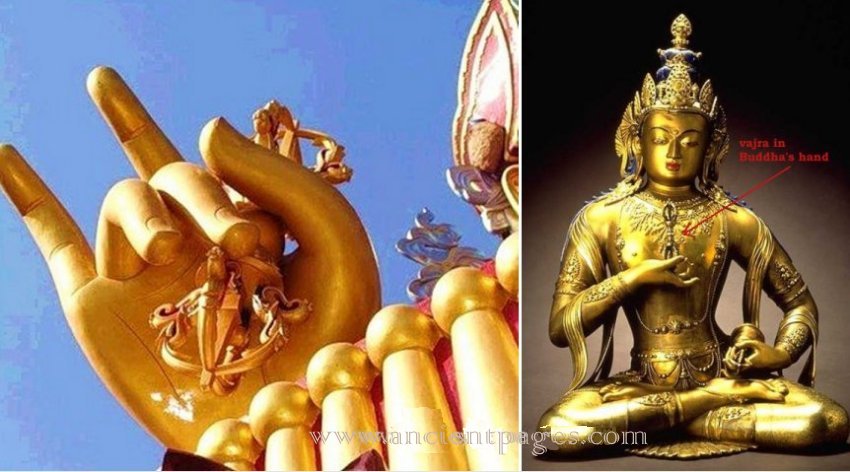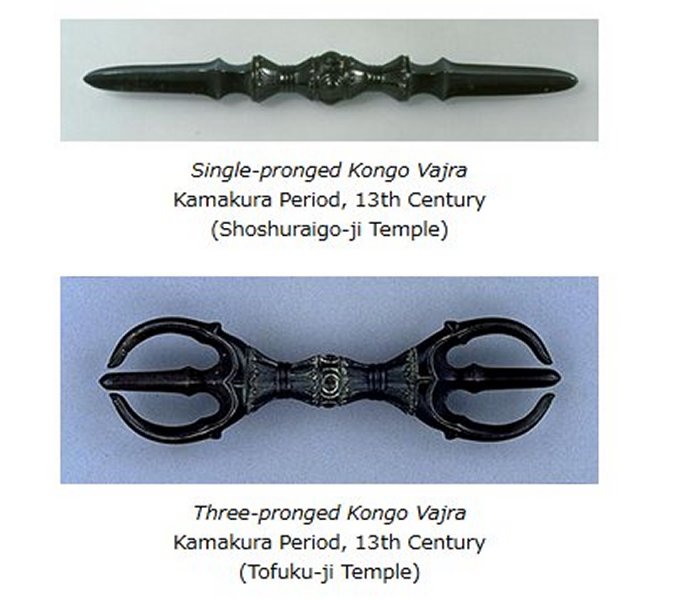Is Mysterious And Powerful Vajra One Of The Most Dangerous Weapons Of The Gods?
A. Sutherland - AncientPages.com - An unknown, terrible, and powerful ancient weapon could have contributed to the collapse of one or several technologically advanced civilizations that existed in the distant past.
Could it be that the mysterious and terrible vajra - a powerful thunderbolt throwing light - was one of such unbelievable weapons?
When in the early twentieth century, people began to understand the unbelievable potential of radioactive decay; they also began to understand that it was not the first time the existence of a radioactive isotope appeared in the history of humankind.
This concept was proposed by Frederick Soddy (2 September 1877 – 22 September 1956), an English scientist who in fact, predicted the existence of a radioactive isotope but Soddy also suggested that there was once an ancient but extremely advanced civilization capable of harnessing of the energy of nuclear reactions.
However, due to the misuse of this source of energy, this ancient civilization was almost completely destroyed.
Many of us believe that Mahabharata and the Ramayana are not science fiction works, but reality. The texts describe sophisticated aircraft such as Vimanas and Vailixi, and tell about using of terrible nuclear weapons.
Did anything of this highly sophisticated ancient heritage survive until today?
Vajra is a Sanskrit word that defies translation because of its numerous meanings, but essentially vajra is an indestructible substance, usually represented by a diamond.
In Tibet, it is called Dorje, in Japan – kongose, in China – dzingansi and Mongolia – Ochir. This is an important ritual object in Hinduism, Buddhism, and Jainism. We often see the vajra in the Buddha’s hand. Vajra represents a religious symbol like the cross for Christians and the crescent for Muslims.
In yoga, there is a posture called vajrasana – its meaning is to make the body strong as a diamond.
One kind of ritual object is the Kongo vajra (meaning ‘thunderbolt’), which often has sharp, dagger-like prongs. Kongo vajra can have one, three, five, or more prongs on each end. Some have Buddhist jewel designs.
Indra – the most important god in Vedic religion – is frequently portrayed wielding a powerful thunderbolt – vajra, which in later Buddhism becomes a diamond scepter, the Vajrayana.
Was Indra’s vajra one of his weapons used against enemies like the demon Vritra described as both snake and dragon?
According to early Vedic texts, this demon, also known as the Enemy, had transformed himself into a fearsome “snake” with no less than 99 coils.
Unfortunately for local farmers these tremendous coils were blocking up the rivers and streams and causing a great drought.
So horrifying was Vritra that none of the gods dared intervene and it was only Indra who found the courage, to fight the beast with one of his thunderbolts. As we know also Zeus was the bearer of the thunderbolt, wielding his weapon against the powers of darkness.
The substance of vajra fully controls devious influences, including heavenly demons and outside ways. The light, which is the characteristic mark of the vajra, has the power to break up all darkness, yet protects itself from all destruction. Further, it is said that Vajra is durable, luminous, and able to cut. The substance of vajra is durable, able to destroy what nothing else can, and yet itself indestructible.
According to ancient traditions, Vajra itself is a thunder of a thousand blades forged from iron, or gold mixed with bronze or stone.
This powerful device could not only destroy the enemy in attacking flying machines, but it also had the ability to cause rain and thus, it was a symbol of fertility.
Written by A. Sutherland - AncientPages.com Staff Writer
Copyright © AncientPages.com. All rights reserved. This material may not be published, broadcast, rewritten or redistributed in whole or part without the express written permission of AncientPages.com
More From Ancient Pages
-
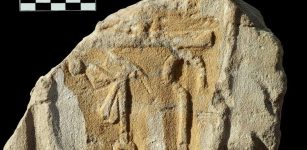 Gebel El Silsila: Remains Of Long-Lost New Kingdom Temple Found
Civilizations | May 19, 2015
Gebel El Silsila: Remains Of Long-Lost New Kingdom Temple Found
Civilizations | May 19, 2015 -
 Bones Of Giants Unearthed In Ancient Cave
Featured Stories | Sep 23, 2018
Bones Of Giants Unearthed In Ancient Cave
Featured Stories | Sep 23, 2018 -
 Pooka: Solitary Spirit And Not Entirely Benevolent Prankster In Irish Folklore
Celtic Mythology | Jun 4, 2016
Pooka: Solitary Spirit And Not Entirely Benevolent Prankster In Irish Folklore
Celtic Mythology | Jun 4, 2016 -
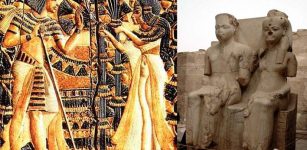 Ankhesenamun – Mysterious Death Of Tutankhamun’s Wife Ended The True Amarna Bloodline
Featured Stories | Mar 23, 2018
Ankhesenamun – Mysterious Death Of Tutankhamun’s Wife Ended The True Amarna Bloodline
Featured Stories | Mar 23, 2018 -
 Legendary Beowulf Fighting Dragon Grendel In Heroic Poem Written In Anglo-Saxon England
Featured Stories | Aug 14, 2022
Legendary Beowulf Fighting Dragon Grendel In Heroic Poem Written In Anglo-Saxon England
Featured Stories | Aug 14, 2022 -
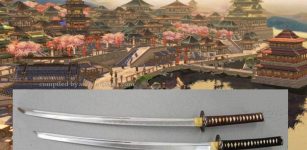 Katana ‘Soul Of The Samurai’ – Most Famous Japanese Sword With Long Tradition
Ancient History Facts | Apr 12, 2018
Katana ‘Soul Of The Samurai’ – Most Famous Japanese Sword With Long Tradition
Ancient History Facts | Apr 12, 2018 -
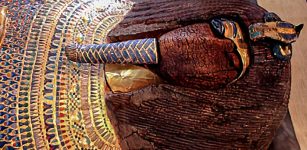 Dispute And Mystery: Strange Case Of The Tomb KV55 In The Valley Of Kings, Egypt
Civilizations | Oct 8, 2015
Dispute And Mystery: Strange Case Of The Tomb KV55 In The Valley Of Kings, Egypt
Civilizations | Oct 8, 2015 -
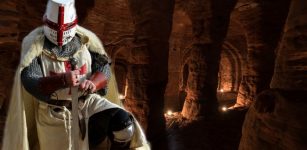 Knights Templar’s Mysterious Underground Chambers Hidden In The Caynton Caves Discovered
Archaeology | Apr 13, 2021
Knights Templar’s Mysterious Underground Chambers Hidden In The Caynton Caves Discovered
Archaeology | Apr 13, 2021 -
 Dangerous Anomaly Inside Mysterious European Mountain Remains Unexplained – Examining Evidence – Part 2
Featured Stories | Mar 17, 2021
Dangerous Anomaly Inside Mysterious European Mountain Remains Unexplained – Examining Evidence – Part 2
Featured Stories | Mar 17, 2021 -
 Ominous Black Layer – A Geological Anomaly Or Scientific Evidence Of A Great Ancient Cosmic Catastrophe?
Featured Stories | Jan 29, 2019
Ominous Black Layer – A Geological Anomaly Or Scientific Evidence Of A Great Ancient Cosmic Catastrophe?
Featured Stories | Jan 29, 2019 -
 Mythical Shield-Maidens Did Exist – Evidence Of Female Viking Warriors Discovered
Archaeology | Sep 9, 2017
Mythical Shield-Maidens Did Exist – Evidence Of Female Viking Warriors Discovered
Archaeology | Sep 9, 2017 -
 Unorthodox Ancient ‘Out-Of-This World’ Carvings Were Found And Destroyed – Mysterious Labyrinth And Unknown Ruins – Part 2
Featured Stories | Aug 13, 2020
Unorthodox Ancient ‘Out-Of-This World’ Carvings Were Found And Destroyed – Mysterious Labyrinth And Unknown Ruins – Part 2
Featured Stories | Aug 13, 2020 -
 Traces Of The Watchers In Ancient China Shed New Light On This Mysterious Lost Race
Civilizations | Aug 11, 2018
Traces Of The Watchers In Ancient China Shed New Light On This Mysterious Lost Race
Civilizations | Aug 11, 2018 -
 Kelpie – Supernatural Horse-Liked Creature Lures Humans To Death In Scottish Lore
Featured Stories | Dec 29, 2021
Kelpie – Supernatural Horse-Liked Creature Lures Humans To Death In Scottish Lore
Featured Stories | Dec 29, 2021 -
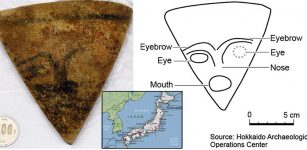 Jomon Period: Triangle-Shaped Stone Artifact Depicting Human Face Found For The First Time In Japan
Archaeology | Dec 25, 2017
Jomon Period: Triangle-Shaped Stone Artifact Depicting Human Face Found For The First Time In Japan
Archaeology | Dec 25, 2017 -
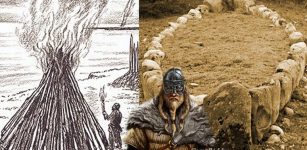 Ship-Shaped Burial Of Tjelvar – Legendary First Man Who Brought Fire To Gotland
Featured Stories | Feb 25, 2021
Ship-Shaped Burial Of Tjelvar – Legendary First Man Who Brought Fire To Gotland
Featured Stories | Feb 25, 2021 -
 14th Century Murals With ‘Warrior Saints’ Found In Church Of Ancient City Cherven In Bulgaria
Archaeology | Apr 10, 2020
14th Century Murals With ‘Warrior Saints’ Found In Church Of Ancient City Cherven In Bulgaria
Archaeology | Apr 10, 2020 -
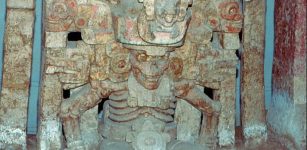 Mictlan – Underworld Realm Of The Dead In Ancient Aztec Beliefs
Aztec Mythology | Jul 2, 2018
Mictlan – Underworld Realm Of The Dead In Ancient Aztec Beliefs
Aztec Mythology | Jul 2, 2018 -
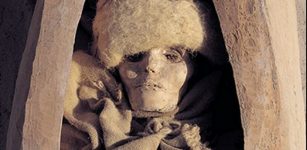 Mysterious Sleeping Beauty Of Loulan Mummy Is Still Perfectly Preserved After 3,800 Years!
Civilizations | Oct 30, 2014
Mysterious Sleeping Beauty Of Loulan Mummy Is Still Perfectly Preserved After 3,800 Years!
Civilizations | Oct 30, 2014 -
 Long-Lost Anglo-Saxon Monastery Ruled By Queen Cynethryth Of Mercia Discovered By Archaeologists
Archaeology | Aug 19, 2021
Long-Lost Anglo-Saxon Monastery Ruled By Queen Cynethryth Of Mercia Discovered By Archaeologists
Archaeology | Aug 19, 2021

